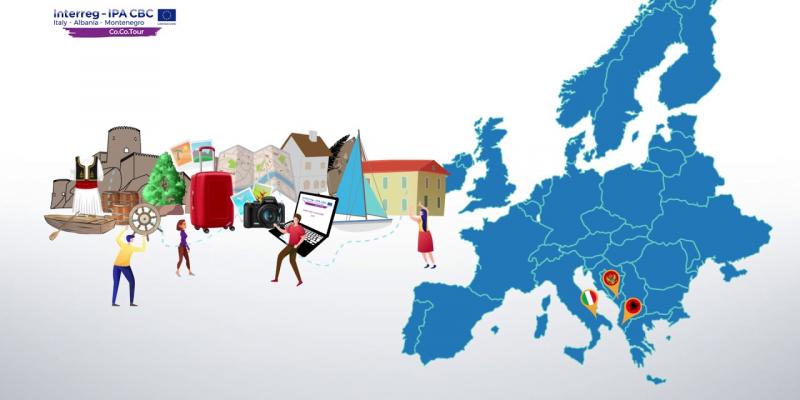
The Co.Co.Tour Project Partnership has worked closely to bring a new model of sustainable tourism development. This model refers to the prototype of the Port Museum in Tricase, which is known as a good example to be followed by coastal communities. This is one of the very few models of economic, social and environmental development, a perfect and concrete example of the current concept of sustainability, applied to a Mediterranean coastal community. Through the partnership created between 3 organizations and 3 municipalities, as well as with the co-financing of the Programme Interreg IPA (II) Cross-Border Cooperation program Italy - Albania – Montenegro it became possible to develop the Eco-Museum crossborder model and to create a communication network between municipalities, businesses, tour operators and coastal communities in Tricase, Himara and Herceg Novi. The establishment of the partnership and the Eco-museum‘s network is a good example for continuing cooperation in the future, as long as the project is completed.
It is important to understand an “Eco-museum” model. More than an object or building is a concept, a cultural phenomenon that stems from the relationships between a specific place, which encompasses heritage and art objects, and the people, which form a community and identities, that inhabit that place. In this regard, we have three different building reconstructions. (this will be specified in T 3.1.1)
Eco-museums are formed from the participation of three major groups:
1- personnel and municipality,
2- visitors and tour operators,
3- local inhabitants and their interactions and relations with the accompanying art objects and heritage of the involved community and place.
In order to understand and implement the Eco-museum model in Himara (Albania) and in Herceg Novi (Montenegro) it was important to take many actions like territorial analyzes, crosssborder meeting, meeting with the community, sharing experiences within partnership, etc.
The Italian partner, Magnia Grecia Mare association, collected all the information needed and assisted the partnership to develop the proper Eco Museum model. For this purpose a guideline were produced and translated in English, Albanian and Montenegrin language for a larger use by other interested parties. The guideline is structured in three different procedural steps distinguishing the project cycle of a coastal Eco-museum. The three steps are as follows:
Step 1 – Definition and establishment of the Eco-museum
Step 2 – Development and management of the Eco-museum
Step 3 – Involvement and participation of local stakeholders.
If you want to know more on “How to develop an Eco-Museum crossborder model”, click on the links:
Italian
This project is co-financed by the European Union within the Instrument for Pre-Accession Assistance (IPA II), Interreg IPA Cross-Border Cooperation program Italy - Albania - Montenegro.

